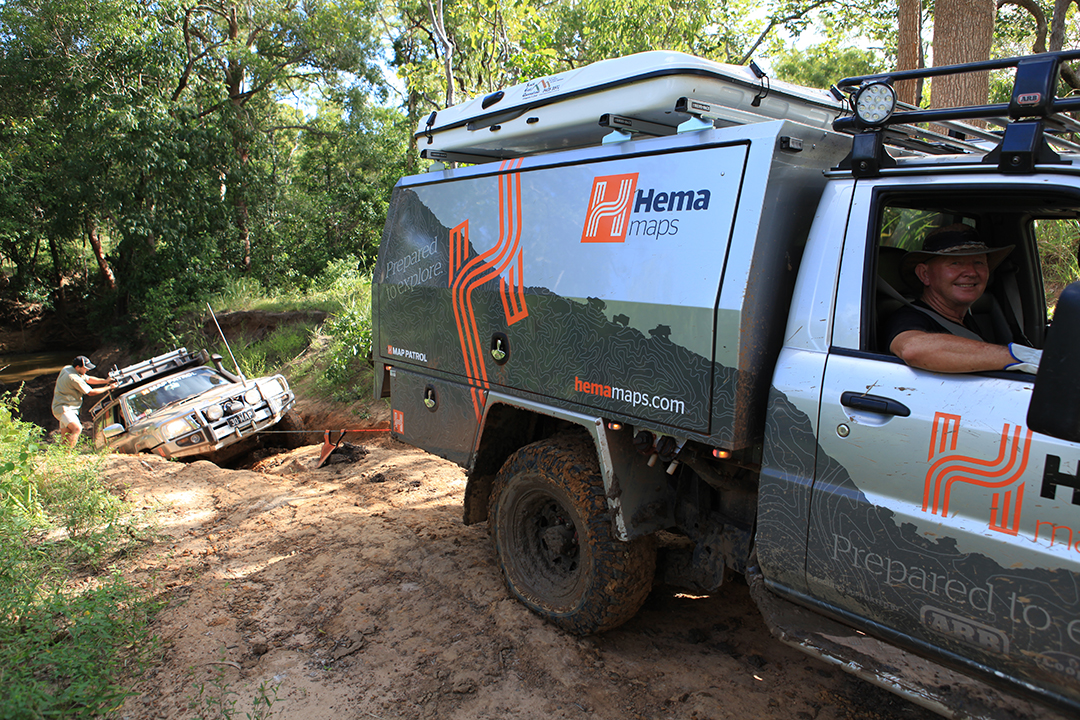Top 5 emergency survival items
 These top five survival items will help to get you safely through the most common emergency situations.
These top five survival items will help to get you safely through the most common emergency situations.
When you’re out exploring the vast unknown of the Aussie outback, emergency situations can arise quickly and unexpectedly. Whether you’re on the road, doing a day-trip on foot, or just kicking back at camp, these top five survival items will help to get you safely through the most common emergency situations.
#1 Enough water
Water is your number one priority when exploring Australia. You can live for about three weeks without food, but dehydration can kill you in less than a day. Yes, conventional wisdom says the average person can last two days without water, but in a hot, dry climate like the Australian desert, that process is accelerated, so running out of water is one of the most dangerous situations you can get into. Always make sure you’re carrying enough water to last through an unexpected event, such as a vehicle breakdown. If you’re out hiking and can’t take enough water with you, make sure there are reliable water access points along your journey. It’s also a good idea to carry water purification tablets or an emergency water filtration device like a LifeStraw, to avoid illness should you need to rely on rivers and creeks as your water source. And remember, where possible avoid drinking stagnant water.
#2 Emergency first aid kit
Taking a well-stocked first aid kit when travelling through Australia is vital. Even minor cuts and scrapes can become holiday-ending problems if you don’t clean and dress them appropriately, especially if they become infected. For more serious injuries, a first aid kit might be the one thing that gets you through the time between the injury occurring and getting professional medical help. It’s important to check your first aid kit before each trip, and to replace anything you use as soon as possible. All of this is useless, of course, if you don’t know how to use what’s in your kit. One of the most important things you can do to prepare yourself for an emergency is to educate yourself - go and take a comprehensive first aid course, and refresh your knowledge every year. It might just save someone’s life.
 #3 Emergency beacon
#3 Emergency beacon
There are three types of emergency beacon - EPIRB, ELT and PLB. EPIRBs, or ‘Emergency Position-Indicating Radio Beacons’ are used on boats, and they are quite large and heavy. ELTs, or ‘Emergency Location Transmitters’, are used on aircraft. PLBs, or ‘Personal Locator Beacons’, are the smallest of the three types of emergency beacons, and these are what you want to use on land, from 4WDing to biking to hiking. All emergency beacons will send out a signal on the same frequency, containing your GPS coordinates, which is picked up by the international satellite system for search and rescue. Your location is then relayed along until it reaches the Australian Rescue Coordination Centre (RCC) in Canberra. The RCC will then send in in a rescue team, usually via helicopter, to your location. Carrying an emergency beacon may be the only way to get emergency medical assistance if you are in a remote location without phone reception, and it’s much better to be safe than sorry.
#4 4WD recovery and repair gear
One of the easiest emergencies to avoid is a stuck or broken down vehicle. By carrying the right gear, you can rescue your vehicle from a range of situations, and undertake minor repairs on the road. Ensuring you have a functional winch, appropriate snatch straps, a set of MaxTrax, a spare tyre and a range of tools to perform basic repairs could be the difference between calling for help, and getting back on the road under your own steam.
#5 Knowledge and training
The best thing you can take with you to avoid or survive an emergency situation is your own mind. Learning as much as you can before you head out, or going on a few trips with someone more experienced first, could save you a world of trouble. Doing some basic training can help you to avoid those rookie errors that catch so many out. You can undertake formal training in everything from a range of 4WD skills, to bush survival and even avalanche survival, for those heading out into the alpine backcountry in winter. And, of course, every traveller should have some basic first aid training under their belt.








0 comments